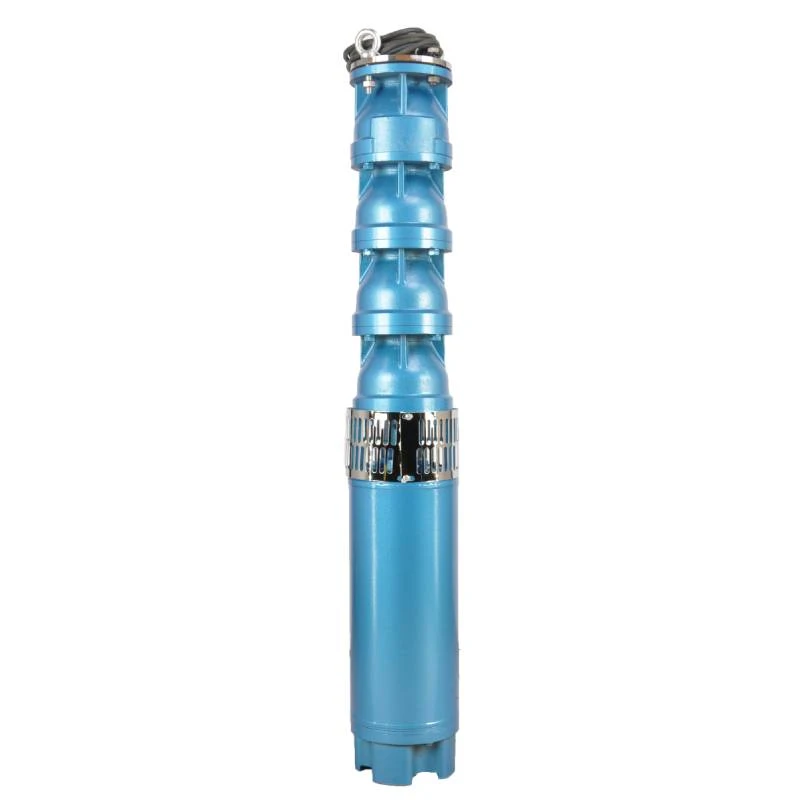Sep . 25, 2024 01:09 Back to list
submersible pump oil vs water filled
Understanding Submersible Pump Oil vs. Water-Filled Options
Submersible pumps are widely used in various applications, from draining flooded basements to irrigation systems in agriculture. A crucial aspect of their design is the type of fluid used for cooling and lubrication of the motor. The two primary options for submersible pump designs are oil-filled and water-filled pumps. Each has its advantages and disadvantages, making it essential to understand their differences when selecting the right pump for your needs.
Oil-Filled Submersible Pumps
Oil-filled submersible pumps are designed with oil as the primary cooling and lubrication medium
. The oil serves several essential functions it helps to dissipate heat generated by the motor, lubricates moving parts, and prevents corrosion within the pump. The use of oil also allows for efficient heat transfer, which can prolong the life of the motor.One of the main advantages of oil-filled pumps is their efficiency and durability. They are generally able to run for longer periods under high performance without overheating. Additionally, oil-filled pumps are less susceptible to freezing in cold conditions, making them suitable for various environmental conditions.
However, there are downsides to oil-filled pumps as well. They typically require more maintenance than their water-filled counterparts. Over time, the oil can become contaminated, necessitating regular checks and changes. Additionally, if there is a leak in the pump casing, the oil can escape into the surrounding environment, which could lead to environmental concerns and additional costs for cleanup.
Water-Filled Submersible Pumps
submersible pump oil vs water filled

Water-filled submersible pumps, on the other hand, utilize water as the cooling and lubricating agent. This type of pump is often designed to operate in clean or relatively clean water conditions. Water-filled pumps are typically less complicated in terms of maintenance. Since water is universally available and does not require the same level of containment as oil, repairs and replacements are often simpler and more cost-effective.
One of the significant benefits of water-filled pumps is their reduced risk of environmental hazards. Since these pumps use water and not oil, there is no risk of oil spills or contamination. This quality makes water-filled pumps particularly appealing for residential and environmentally sensitive applications.
However, water-filled pumps do have their limitations. They can be less efficient in terms of heat dissipation, especially in high-temperature conditions. As a result, they may not be suitable for heavy-duty applications that require continuous operation under significant loads. Moreover, the risk of freezing in cold temperatures can limit their usability in certain climates.
Choosing the Right Pump
When deciding between oil-filled and water-filled submersible pumps, it's essential to consider several factors, including the specific application, operating conditions, and environmental impact. For high-demand applications requiring extended operation with minimal downtime, oil-filled pumps may be the better choice. Conversely, for light-duty tasks in residential applications or environmentally sensitive areas, water-filled pumps would likely be more appropriate.
In conclusion, both oil-filled and water-filled submersible pumps have distinct advantages and drawbacks. Evaluating the specific needs of your project, the environment in which the pump will operate, and the maintenance requirements will guide you toward the right choice. Understanding these differences ensures that you invest in a pump that will perform efficiently, effectively, and sustainably for your intended application.
-
Submersible Water Pump: The Efficient 'Power Pioneer' of the Underwater World
NewsJul.01,2025
-
Submersible Pond Pump: The Hidden Guardian of Water Landscape Ecology
NewsJul.01,2025
-
Stainless Well Pump: A Reliable and Durable Pumping Main Force
NewsJul.01,2025
-
Stainless Steel Submersible Pump: An Efficient and Versatile Tool for Underwater Operations
NewsJul.01,2025
-
Deep Well Submersible Pump: An Efficient 'Sucker' of Groundwater Sources
NewsJul.01,2025
-
Deep Water Well Pump: An Efficient 'Sucker' of Groundwater Sources
NewsJul.01,2025
-
 Submersible Water Pump: The Efficient 'Power Pioneer' of the Underwater WorldIn the field of hydraulic equipment, the Submersible Water Pump has become the core equipment for underwater operations and water resource transportation due to its unique design and excellent performance.Detail
Submersible Water Pump: The Efficient 'Power Pioneer' of the Underwater WorldIn the field of hydraulic equipment, the Submersible Water Pump has become the core equipment for underwater operations and water resource transportation due to its unique design and excellent performance.Detail -
 Submersible Pond Pump: The Hidden Guardian of Water Landscape EcologyIn courtyard landscapes, ecological ponds, and even small-scale water conservancy projects, there is a silent yet indispensable equipment - the Submersible Pond Pump.Detail
Submersible Pond Pump: The Hidden Guardian of Water Landscape EcologyIn courtyard landscapes, ecological ponds, and even small-scale water conservancy projects, there is a silent yet indispensable equipment - the Submersible Pond Pump.Detail -
 Stainless Well Pump: A Reliable and Durable Pumping Main ForceIn the field of water resource transportation, Stainless Well Pump has become the core equipment for various pumping scenarios with its excellent performance and reliable quality.Detail
Stainless Well Pump: A Reliable and Durable Pumping Main ForceIn the field of water resource transportation, Stainless Well Pump has become the core equipment for various pumping scenarios with its excellent performance and reliable quality.Detail
